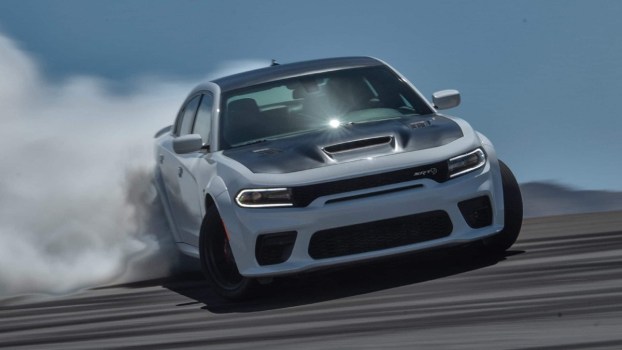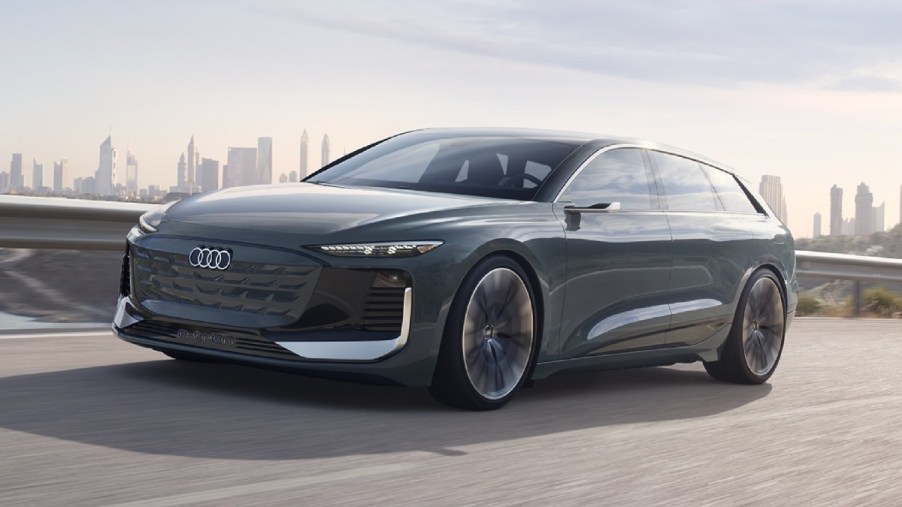
Could Electric Cars Save Station Wagons From Dying?
Station wagons have been dying a slow death since the height of their popularity in the mid-1970s. Now, most automakers don’t offer a station wagon in the United States — as consumers look to SUVs as the family vehicle of choice. However, there could be salvation for the underappreciated people-hauler: EVs. Electric cars could save station wagons from dying.
Why aren’t there many station wagons anymore?
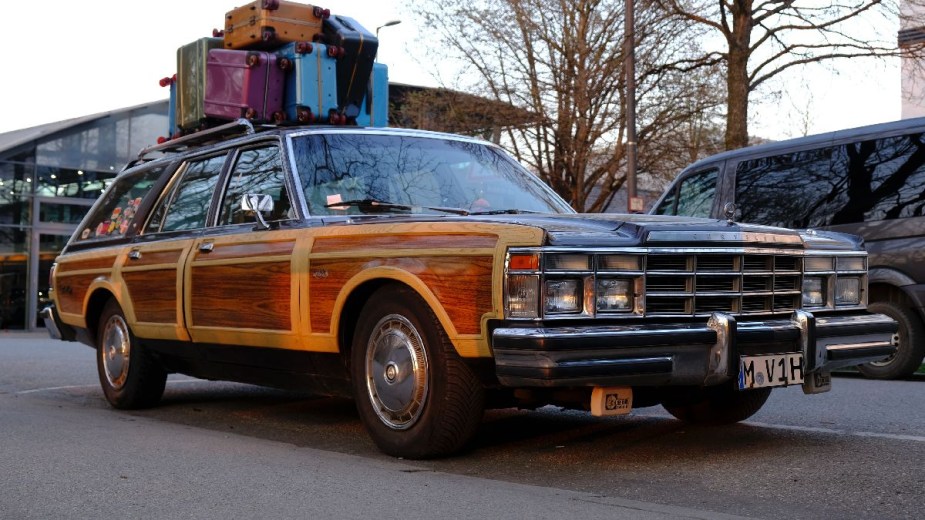
Before we get to the electric car element, we’ll address why there aren’t many station wagons anymore. While station wagons are still common in Europe, in America, it’s a different story. There are a few reasons for this dwindling popularity. The first hit occurred during the 1973 oil crisis, which caused fuel prices to skyrocket. Large and inefficient station wagons were no longer feasible.
Then, in the 1980s, station wagons faced increased competition from minivans, especially the Chrysler models based on the K platform. Minivans soon surpassed station wagons in popularity. The next blow occurred with SUVs in the 1990s. The last full-size American wagons, the Buick Roadmaster and Chevy Caprice, were discontinued in 1996.
Now, station wagons are a far cry from their heyday. Per Investopedia, in 1976, the peak year, there were 62 models with nearly one million units sold, which constituted 10% of all vehicle sales in the U.S.
However, in 2022, per Motor1, there were only 183,000 units sold. Also, that number is misleading, for most of the station wagons are actually rugged crossover SUVs in disguise, such as the Subaru Outback.
EVs could prevent the death of the wagon
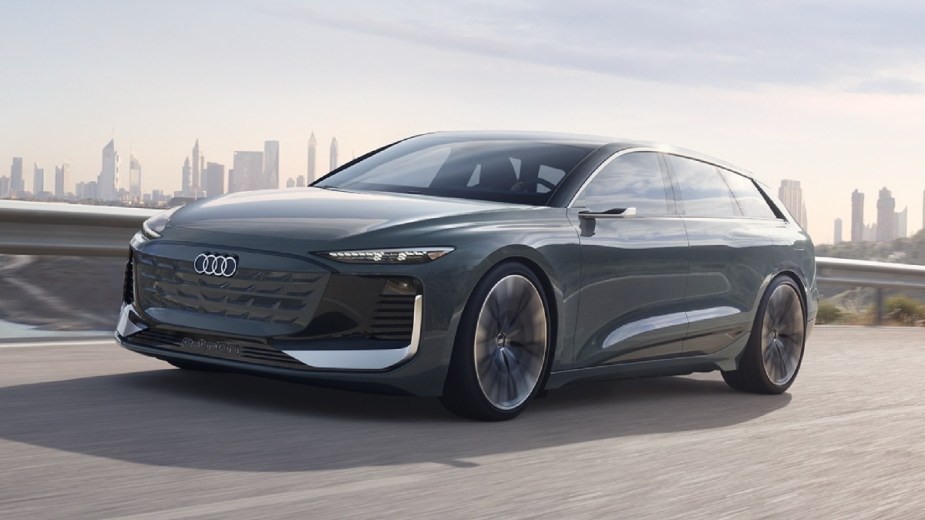
However, EVs could allow station wagons to live to see another day. Also, station wagons provide a potential solution to a problem for electric cars.
One of the biggest issues facing electric cars is range anxiety. With a lower driving range compared to most gas-powered vehicles, drivers fear running out of electric power before they can reach a charging station or make it back home.
Electric wagons can have better driving range than heavier electric SUVs
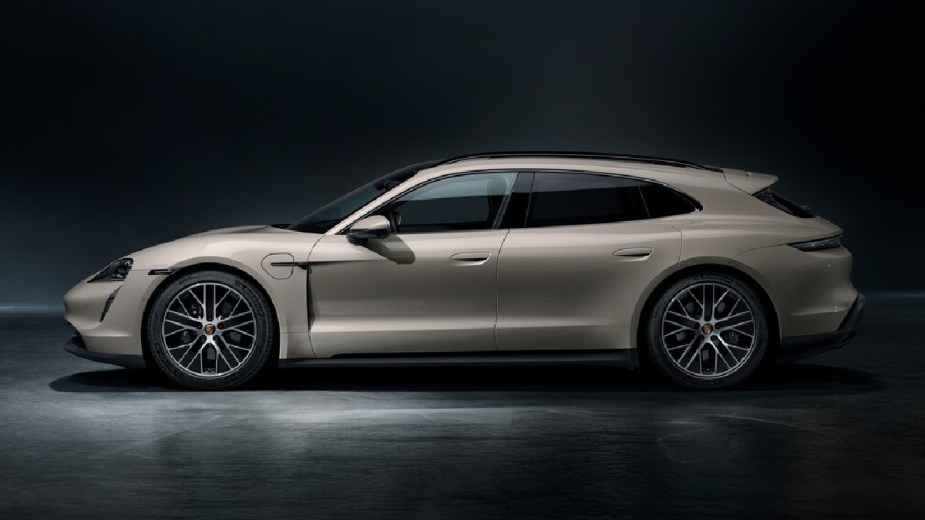
There are multiple factors that can lower the driving range of an electric car. This includes curb weight, poor aerodynamics, and rolling resistance. SUVs are typically weak in all of these areas, resulting in poor efficiency and limited range for electric SUVs. While smaller crossovers are an improvement over large SUVs for efficiency, station wagons are a better solution.
With their longer wheelbase and extra space to fit in more battery cells, station wagons are an ideal solution for range anxiety, as detailed by CarBuzz. Also, they are not as tall as SUVs, so aerodynamic efficiency isn’t compromised.
In today’s multitasking world, people want a little bit of everything, but it’s impossible to do that for an electric SUV — with the current technologies. If you want a larger electric crossover or SUV with more space and utility, you’ll have to sacrifice range. This is exemplified by the Tesla lineup, which sells vehicles with similar batteries and motors. The Model S (405 miles) and Model 3 (358 miles) have longer estimated driving ranges than their SUV counterparts, the Model X (351 miles) and Model Y (330 miles).
Cult status could also renew interest in station wagons
Another factor that could help station wagons is their cult status. While SUVs — and minivans before that — supplanted wagons in popularity, there is still a cult following. Like other things in pop culture, people yearningly look at wagons to reminisce about past decades.
There are many websites and clubs devoted to the beloved wagon, such as the American Station Wagon Owner’s Association (ASWOA). Admittedly, I fondly look back on memories of my childhood riding in my family’s green Ford Fairmont wagon.
What EV wagons are available?
However, currently, there are not many electric wagons available in the U.S. — and they are all luxury models. This includes the Porsche Taycan Sport Turismo and the Taycan Cross Turismo. There’s also the upcoming Audi A6 Avant e-tron. Additionally, Mercedes-Benz has hinted that future electric crossovers will have wagon-like designs.
For station wagons to truly make a comeback in the U.S. as electric cars, though, they’ll likely need to be a lower-cost mainstream model produced by an American automaker. The reason for this is the passage of the Clean Energy for America Act, which enables up to $12,500 in federal EV tax credits.
However, for an electric wagon to be eligible for the full tax credit, it must be built by an American car company and cost under $50,000. The same regulation applies to EV sedans and hatchbacks. However, a higher $80,000 threshold applies to electric SUVs and trucks.
Nonetheless, the movement toward electric cars could be the last hope for station wagons. With the long wheelbase, extra space for batteries, and an aerodynamic body, they are able to have a higher range than EV SUVs. Considering that SUVs are a contributing cause of the dwindling popularity of station wagons, it’s ironic that EVs could reverse this trend — with electric wagons offering advantages over electric SUVs.
